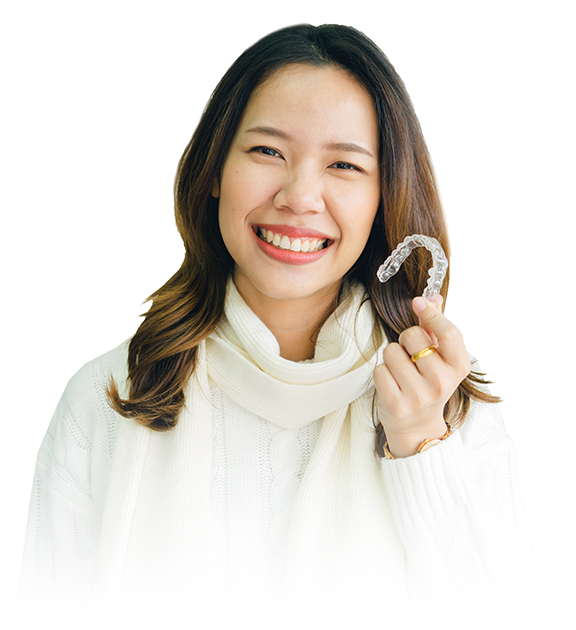Want to feel better? Want to be better? Check out these tips for getting healthy and maintaining your health from the experts.
The Dangers of Vaping
Courtesy of Orlando Health
Vaping has been marketed as a less harmful method to inhale nicotine than smoking. From emphysema and chronic bronchitis to lung cancer and heart disease, the dangers of smoking are well documented, leading many people to vape because they think it’s safer than cigarettes.
However, according to Dr. Mark Weatherly, a pediatric pulmonary disease specialist with Orlando Health Arnold Palmer Hospital for Children, even though vaping uses “non-combustible nicotine,” vaping and cigarettes are both a major health risk.
“Although vaping has been marketed as a cleaner and safer alternative to traditional cigarettes due to its filtration of chemicals, this simply isn’t true,” Dr. Weatherly says.
In fact, Dr. Weatherly points out that instead of weaning people off tobacco altogether, vaping has now been shown to be a starting point for many teenagers to move into smoking.

Health Hazards Are Many
Vaping has been linked to seizures, lung issues (such as inflammation of the lungs or collapsed lungs), extreme shortness of breath, low oxygen levels, nicotine toxicity and a number of deaths.
“Young people who vape also are at risk for suffering from chronic lung disease for the rest of their lives,” Dr. Weatherly says.
There are also other dangers associated with vaping. Many e-cigarette users fill empty cartridges with their own mix of products. The health risks of inhaling these homemade vaping cocktails are numerous. Most inhaled flavorings and dyes in commercial vaping liquids also haven’t been studied for their toxicity.
As reported by the Centers for Disease Control and Prevention, kids, teens and young adults are particularly at risk for illness or death from vaping. The U.S. Food and Drug Administration has even labeled vaping as “an epidemic” among teens. Unfortunately, vaping is now something that parents everywhere need to be aware of.
Are Carbohydrates Really Unhealthy?
By Saadia Alvi, MD, Vitality Endocrinology
This is one of the most common questions my patients ask me. In order to answer this question, let’s start by taking a look at what carbohydrates actually are.
Carbohydrates are one of the three macronutrients our bodies need. The other two are fat and protein. Each macronutrient serves its own specific function and all three are a vital source of nutrition. It is important to remember that many whole foods have some combination of these three macronutrients.
When evaluating the carbohydrate content of an ingredient, it’s important to look at the type of carbohydrate you’re working with. Is it a complex or simple carbohydrate? Complex carbohydrates are found in naturally occurring, unprocessed or minimally processed foods such as health-promoting whole grains and vegetables. Simple carbohydrates are found in both unhealthy, processed or refined foods and health-promoting fruits.
Grains can be broken down to whole grains and refined grains. We can use the schematic of a whole grain and refined grain to understand the difference between the two types.
A whole grain is full of fiber, nutrients, minerals and phytochemicals while a refined grain is stripped away of some of the most nutritional components of the grain. The refined grain is devoid of the beneficial bran and germ layers and is left with the higher carbohydrate endosperm.
Studies have shown that those eating whole grains have a lower risk of developing cardiovascular disease, stroke, obesity, diabetes and even premature death. Those eating refined carbohydrates may increase their risk of the same chronic diseases.
So in summary, not all carbohydrates are created equal. Eating a doughnut is not the same as eating kale or oatmeal. Complex carbohydrate and whole grain options include quinoa, brown rice, oats and amaranth.

What to Know About DIY Orthodontics
By Jason Battle, Premiere Orthodontics
While many things may come to mind when you think of Do-It-Yourself (DIY) projects, orthodontics probably isn’t one of them. However, the trend of DIY clear aligners was brought to life years ago and is now sustained by a handful of companies.
Smile Direct Club is currently the most well-known DIY clear aligner product. Consumers (who are technically not patients because a doctor-patient relationship has not been established) can visit one of the company’s scan centers to get started or have an impression kit sent to their home. There are two scan centers located in the Orlando area.
In the past several years, other companies have begun to provide at-home clear aligners as well, including Snap Correct, Orthly, Candid and Align9. The pricing varies between $1,849 and $2,600, depending on the brand, compared to a traditional orthodontics experience, which can cost thousands more.
DIY clear aligners can work in some situations, specifically if you have had previous orthodontic treatment and your bite has been corrected. If your problem stems from failure to wear a retainer then DIY might work for you. However, a thorough orthodontic evaluation is needed to determine if the DIY experience will be successful.
Remember that orthodontics is a process of many course corrections throughout treatment in order to get a quality final result. This is true whether your treatment plan includes braces or aligners.
It’s also important to keep in mind that all teeth in all people do not move alike. Some movements and techniques work the first time, and sometimes you need a plan B, C, D, E or F. Since you aren’t being evaluated by the doctor in person, it can be difficult or nearly impossible for the orthodontist treating your case from a computer monitor to make the necessary adjustments throughout treatment to be timely and achieve success.
When it’s time to consider orthodontics for you or your child, make sure you know the details behind all of the options available. That way you can make the most informed decision based on your individual needs.
How to Find the Right Shades
Choosing the right sunglasses means much more than how they look. Just as UV rays can damage your skin, they can also damage your eyes and cornea. According to a 2014 study by the National Eye Institute, UV light can increase your chances of developing cataracts, a clouding around the eye’s lens that can lead to loss of sight acuity, through a process called oxidative stress. UV rays have also been linked to macular degeneration, a treatable, yet incurable disease.
So what should you look for when choosing your sunglasses? High numbers. Choose sunglasses with lenses that are marked with 99 percent or 100 percent of blockage from UVB and UVA rays. Lenses that are labeled with UV 400 protection will shield your eyes from even the smallest amount of UV rays that are present. A misconception that happens when choosing sunglasses is that darker lenses mean more protection. That’s not always the case, since the coating that blocks UV radiation is clear.
Whether you choose designer shades or prescription sunglasses, be nice to your eyes and go for the ones that can protect them best.







Comments